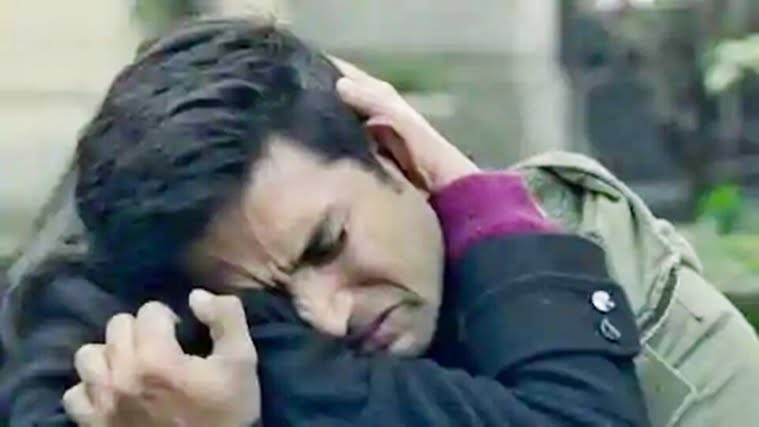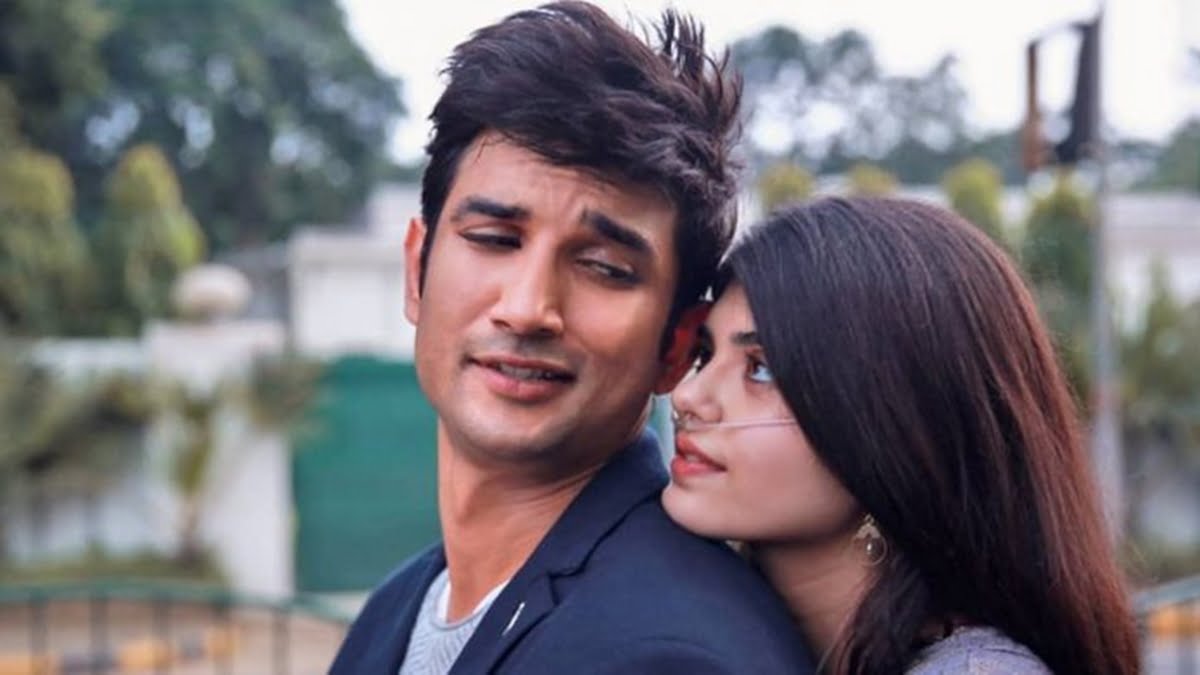Posted By Bhaskar Choudhary
Spoilers Ahead
Dil Bechara, a much-awaited film that released on Disney Hotstar on July 24, is heart-warming for multiple reasons. It was the late actor Sushant Singh Rajput’s final performance. It tells a story of hope – that life can be lived. That even though the beginning and end is beyond our reach, we can still make something out of whatever’s-in-between. Most significantly perhaps, that even though fragments of hope lie in shattered bits and pieces, they can be lifted and seamed into a thread.
These broken and fragmented pieces could also coalesce into a smile. The most poignant hint was perhaps just that, and as much as I cherished the endearing tale of Dil Bechara for the optimism it promises to the viewers despite the death of the hero in the end, I couldn’t help thinking about the turn in the plot at the moment when Manny tells Kizzie about his deteriorating health-condition. This is the moment when vulnerability in the plot shifts from the heroine to the hero, and becomes about his fear of death. That palpable sense of fear, especially in the hero of the film, somewhere a commentary on his masculinity, is a trope that Bollywood seldom employs.
Also read: 8 Years Of Ustad Hotel — Celebrating Non-Conformist Masculinity In Malayalam
The culturally encrypted job of the hero has always been to be a saviour, and there would never be anything problematic in that depiction, if it were only one of the many ways in which masculinities were depicted on screen.
But the portrayal of men on screen has always been derived from the foundational lie that patriarchy has told to the world – that the male body and mind has ceaseless tenacity to withhold pain and project optimism.
Optimism and a fighting spirit are valuable traits to possess, but isn’t there more to being human than sustaining oneself with grit, determination and resilience under all hardships? Don’t we all break down and lose hope? Don’t we all have moments of hysteria?
The trope of a happy-go-lucky jolly figure of a man who can kindle the will and desire to live again in his lady-love is an overused trope in romantic storylines; but in a society where a boy’s tears are invalid simply because he is supposed to man-up, the storyline normalising the trope of the knight in shining armour rescuing the damsel-in-distress could invoke more harm than ever imagined.
For it reinforces the myth that men are worth admiring only when they do not break down. Because emotional tribulations, self-doubt and hysteria are associated with the female protagonists and the men as the answers to their problems. Considering the power that cinema as a socialising tool has, it is important to show how different men and boys in real life are from the normalised knight in shining armour. Dil Bechara attempts to do that.
The urge to live, fight, and win the world is all fine. But what about the possibility that a boy has a heart, which could feel scared, of a million possible things in this world?
The inability to land onto an apt career-choice, the fear of not being able to play the kind of sports that deem you ‘manly’, the anxiety emanating from an anxious, self-conscious body-language that may not pass the test of masculinity from among peers, or the fear of being socially isolated and detached from friendships due to low self-esteem or depression?
The scene in Dil Bechara where Manny tells Kizzie that he had seen his health report before they flew to Paris is a very revealing moment. It indicates that Manny was afraid for himself all along, but he wanted to lift Kizzie’s spirits and make her believe that happiness is possible; so he closeted his fears until they were not repressible anymore.
The scene in Dil Bechara where Manny tells Kizzie that he had seen his health report before they flew to Paris is a very revealing moment. It indicates that Manny was afraid for himself all along, but he wanted to lift Kizzie’s spirits and make her believe that happiness is possible; so he closeted his fears until they were not repressible anymore.
Making Manny a protagonist who has fears, who breaks down despite trying not to, alone makes Dil Bechara adorable apart from any other reason.
For the problem is not that Manny was an essential saviour in Dil Bechara. Manny’s moments of fear that start surfacing more eminently as the plot progresses, leave a subtle hint, that the fear was there all along.
Manny is a happy-go-lucky guy who can laugh on the face of adversity even after he has lost one leg along with the ability to ever feel the rush of passion while playing basketball (which he loved so much) ever again; and in the support group meeting when he is asked to share his experiences or views on life, he is brimming with zeal and thirst for life.
The zeal was real, but so was the fear, and we forget that. In Dil Bechara, Manny’s smile was essential to bring happiness in his best friend J.P.’s life, who was about to lose both his eyes, and for him, Manny probably was the sole meaningful connect that he had to a living person.
But just because a face smiles, does not negate the palpitations in the heart or the bulging fear in the stomach, of life slipping out of your control and running into oblivion.
As an audience, are we going to remember the effort and pain that took Manny in Dil Bechara to sustain the smile on screen during the closing scene that cheers up Kizzie even when she is alone?
If stories were solely about the characters who played in it, there wouldn’t have been much of a problem. But we imbibe our lenses and ways of looking at the world through the narratives on screen, and because often, the man is not purely himself, but also a manifestation of what manhood, or boyhood, in all its idealness should be, are we going to forget that nervousness and anxiety are real emotions that constantly lurk beneath our sane consciousness or the toughness that a man is expected to portray on our screens?

That a boy, as much as he wants to win it all in this world, could also fall down and break apart at times?
Also read: The Many Masculinities In Bollywood: 1960s To The Present
Most importantly, are we going to take the moments of fissures and breaking-points in the plot-line of Dil Bechara as a cue to realise that there is an urgent need to peel off the façade of masculinity to unearth the layers of angst and trauma repressed beneath the facial appearance of the charming hero?
Most importantly, are we going to take the moments of fissures and breaking-points in the plot-line of Dil Bechara as a cue to realise that there is an urgent need to peel off the façade of masculinity to unearth the layers of angst and trauma repressed beneath the facial appearance of the charming hero?
What if the charming hero is not even the face of all boys, or all men in this world?
Some boys carry the weight of their heightened masculinity on their smug arms and shoulders. Some choose to not participate in the drama at all, and live their skinny, fragile selves.
The tale of the knight in shining armour is perhaps not a problem; except that in a patriarchal world, it has been used as a weapon of psychological warfare to further suppress the fear, trauma and anxieties of emotionally sensitive boys since ages, to make society believe that such boys do not exist.
Bhaskar Choudhary recently completed Young India Fellowship, a postgraduate liberal arts diploma from Ashoka University. He has also done Bachelor in Arts from Jai Hind College, Mumbai with a Psychology major, and minor in English Literature and Political Science. Bhaskar loves reading literary classics. His favourites are ‘Wuthering Heights’ and ‘Sula’. He can be found on Instagram.
Featured Image Source: The Print
About the author(s)
Bhaskar Choudhary has recently completed Young India Fellowship, and is pursuing a postgraduate liberal arts diploma from Ashoka University. He has also done Bachelor in Arts from Jai Hind College, Mumbai with a Psychology major, and minor in English Literature and Political Science. He loves reading literary classics. His favourites are 'Great Expectations' and 'Wuthering Heights'.





This is an absolute masterpiece. The writing, first of all, beautifully describes the plot and then explains the concept of masculinity and the burden that comes with it. It definitely makes one think as to how it’s important for the cinema to have movies in tandem with the current progressive thoughts that abandon masculinity and patriarchy.
The article is written beautifully. Bhaskar has a way with the words. It is a much awaited movie and the review has added to its appeal.